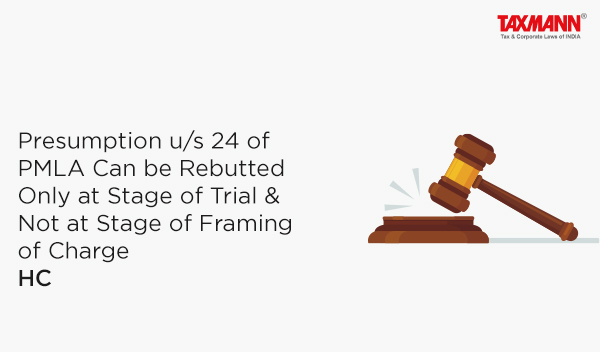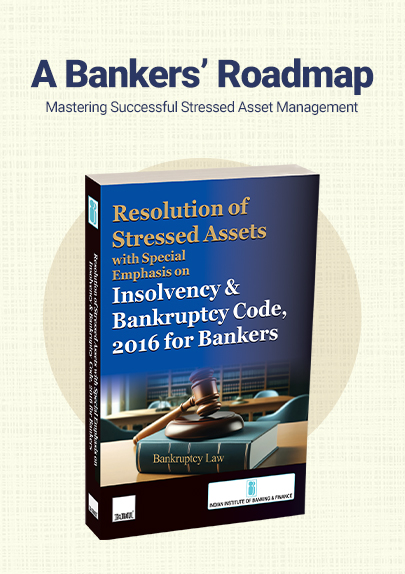Presumption u/s 24 of PMLA Can be Rebutted Only at Stage of Trial & Not at Stage of Framing of Charge | HC
- Blog|News|FEMA & Banking|
- 2 Min Read
- By Taxmann
- |
- Last Updated on 29 September, 2023
Case Details: Kumar Pranav v. State - [2023] 153 taxmann.com 291 (HC - Jharkhand)
Judiciary and Counsel Details
-
- Gautam Kumar Choudhary, J.
- Rahul Kumar & Apoorva Singh, Advs. for the Petitioner.
- Prashant Vidyarthy, C.G.C. for the Respondent.
Facts of the Case
In the instant case, an FIR was registered by CBI against the company ‘Classic Coal’ for offences under sections 120B, 420, 468 and 471 of the IPC and under section 13(2) of the Prevention of Corruption Act. These charges were related to defrauding the Government by submitting false and bogus invoices showing the procurement of bitumen.
After an investigation, a charge sheet was filed against the contracting company ‘Classic Coal’ through its directors, including ‘PK’ (i.e. the father of the petitioner, since dead) and others for causing wrongful loss to the Government of Jharkhand and wrongful gain to the company.
An Enforcement Case Information Report (ECIR) was registered under the Prevention of Money Laundering Act, 2002 (PMLA). The proceeds of crime to the tune Rs. 8.96 crores had been attached by the ED, which included a plot worth Rs. 2.08 crore in the name of the petitioner.
The petitioners filed a petition for discharge under the PMLA, claiming that the said plot was purchased not from the proceeds of crime, but from the financial resources of the company.
It was noted that the presumption under section 24 of the PMLA can be rebutted only at the stage of trial and not at the stage of framing of charges.
High Court Held
The High Court observed that nexus if any, between the properties acquired in the name of the petitioner and the proceeds of crime was a question of fact to be looked into at the stage of trial and not at the stage of discharge.
The High Court held that there was no infirmity in the impugned order passed by the Special Judge whereby and where under the petition of the petitioner for discharge under PMLA had been rejected.
As a result, the instant criminal revision petition for quashing the order by the Special Judge was to be dismissed.
List of Cases Reviewed
-
- Gautam Kundu v. Directorate of Enforcement (Prevention of Money-Laundering Act) [2015] 64 taxmann.com 291/[2016] 133 SCL 341 (SC) (para 14) followed.
List of Cases Referred to
-
- Vijay Madanlal Choudhary v. Union of India [2022] 140 taxmann.com 610 (SC) (para 9)
- Gautam Kundu v. Directorate of Enforcement (Prevention of Money-Laundering Act) [2015] 64 taxmann.com 291/[2016] 133 SCL 341 (SC) (para 14).
Disclaimer: The content/information published on the website is only for general information of the user and shall not be construed as legal advice. While the Taxmann has exercised reasonable efforts to ensure the veracity of information/content published, Taxmann shall be under no liability in any manner whatsoever for incorrect information, if any.

Taxmann Publications has a dedicated in-house Research & Editorial Team. This team consists of a team of Chartered Accountants, Company Secretaries, and Lawyers. This team works under the guidance and supervision of editor-in-chief Mr Rakesh Bhargava.
The Research and Editorial Team is responsible for developing reliable and accurate content for the readers. The team follows the six-sigma approach to achieve the benchmark of zero error in its publications and research platforms. The team ensures that the following publication guidelines are thoroughly followed while developing the content:
- The statutory material is obtained only from the authorized and reliable sources
- All the latest developments in the judicial and legislative fields are covered
- Prepare the analytical write-ups on current, controversial, and important issues to help the readers to understand the concept and its implications
- Every content published by Taxmann is complete, accurate and lucid
- All evidence-based statements are supported with proper reference to Section, Circular No., Notification No. or citations
- The golden rules of grammar, style and consistency are thoroughly followed
- Font and size that’s easy to read and remain consistent across all imprint and digital publications are applied






 CA | CS | CMA
CA | CS | CMA


